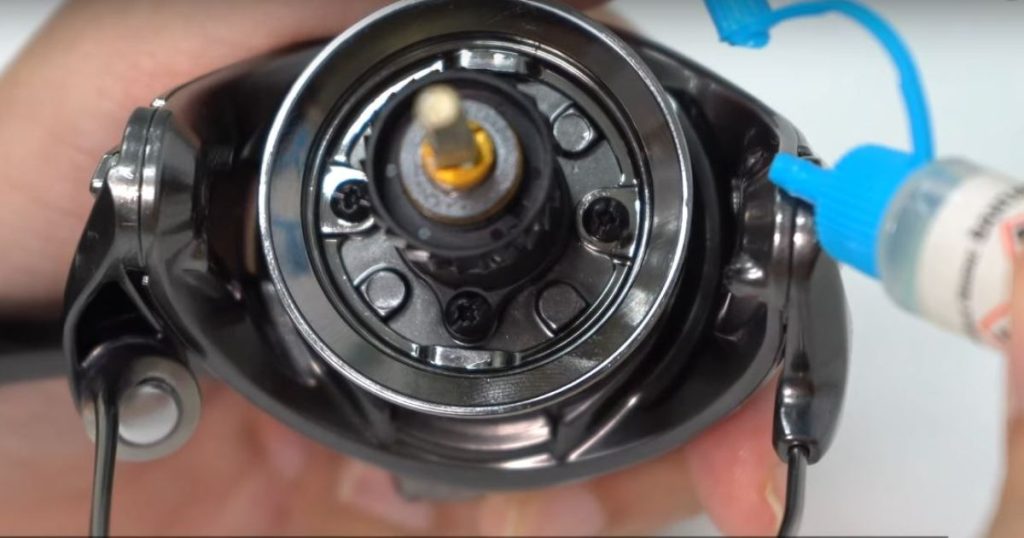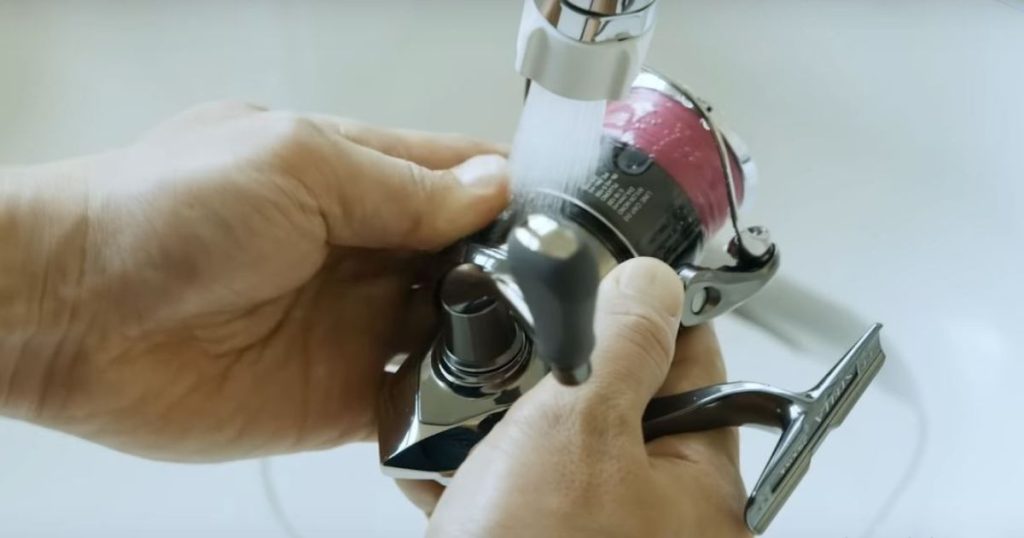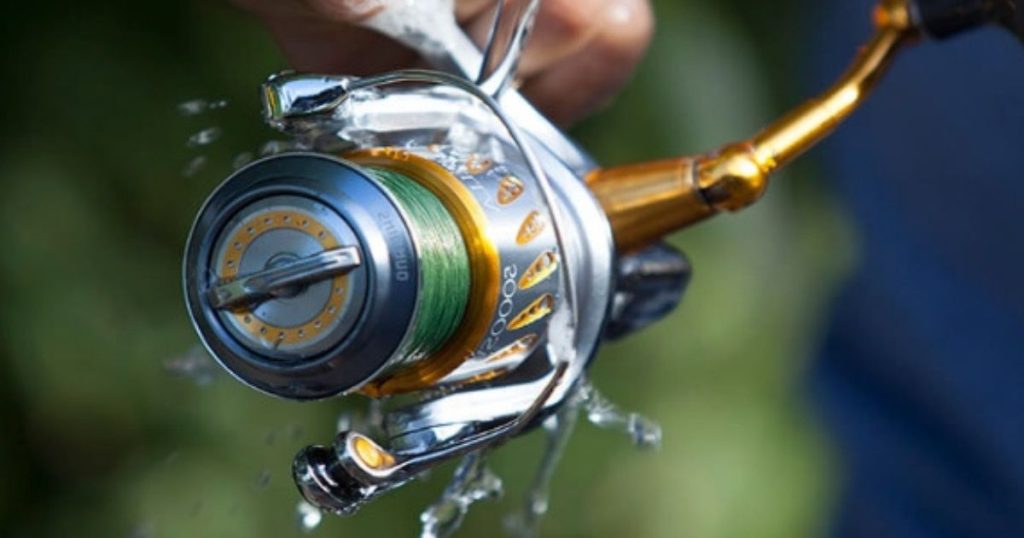If you love fishing, you probably know how expensive fishing reels can be. Like any other piece of equipment, these, too, require regular maintenance and cleaning. The best way to keep your gear in working order is to keep them clean, and your fishing reel is no exception.
Whether you cherish your leisure hours fishing in freshwater or saltwater, it is imperative to clean your fishing reel at regular intervals. But you may be wondering how to clean a fishing reel. Freshwater fishers need to clean their reels once every five trips, while saltwater fishing calls for even more frequent clean-ups.
Maintaining your fishing reel can keep it in good operational condition and enhances the efficiency of your fishing gear, adding to its durability. We know that reels can be expensive, so it would be in your best interest to keep your new reel as clean as possible.
To learn how to clean a fishing reel, we’ve come up with a comprehensive guide to help you. As a fishing enthusiast, you might also find these guidelines on The Coastal Side beneficial!
What Oil Should You Use to Clean a Fishing Reel?

The best way to know how to clean a fishing reel is to use the dedicated reel oil that is available on the market. Apply this reel oil to every moving part of the reel to keep it operational, and the spool will undergo a smooth turn whether you are retrieving or casting.
Proper lubrication will also enhance the performance of the internal mechanisms and bearings that enable the reel to operate.
Reputed brands have also developed all-purpose cleaners that can eliminate oil, grime, grease, fish blood, and other types of dirt from washable surfaces on your fishing reel.
Do not use lighter fluid or gasoline for cleaning a fishing reel. These agents can melt the plastic components and affect the protective covering of the reels.
Should You Soak a Fishing Reel?
No, we do not recommend soaking a fishing reel. Some people do soak their fishing reels: however, soaking can affect the gear system more than it cleans the reel. Even if you have a high-grade fishing reel, it can deteriorate over time and start wearing out. There are many better options when it comes to cleaning your reel.
What Tools Do You Need for Cleaning a Fishing Reel?
Here’s a list of tools that you need to clean your fishing reel. Most of these are household items that you may already have on hand!
- Screwdrivers, preferably a standard one and a small one, depending on the configuration of your reel.
- A small brush or toothbrush for scrubbing.
- A toothpick to help you reach the smaller areas of the reel.
- Cotton swabs and a wrench.
- A pair of tweezers to remove small bits that might remain stuck.
- A boat cleaner or a high-grade cleaning solution capable of removing dirt, oil, fish blood, and grease from your fishing reel.
- A container to store all the parts.
- Reel oil and a dry and clean bag.
How to Clean a Fishing Reel: Steps to Keep It in Good Shape
To properly learn how to clean a fishing reel, you’ll want to first detach the spool from the line. You can use masking tape to secure the lines so that they don’t tangle together.
If you’re using a spincast reel, it’s necessary to take it apart. Feed some of the lines before securing them. After removing the reel cover, remove the spool and the spinner head with a . wrench.
Once you have removed the spinner head spool, access the center shaft and remove it. This will expose the crank bearing, clutch ring, washers, and crank handle. Use tweezers to remove these components and place them on paper towels.
Start cleaning up the individual components using a toothbrush. Scrub the reel assembly from the inside using the cleaning solution. After cleaning the larger parts, work on the smaller ones using the brush.
Use a rag or a piece of cloth to wipe the components off. Hold them up with tweezers to ensure that the parts have been properly cleaned.
Before you re-assemble the parts, you need to clean them up with reel oil or grease so that the parts don’t corrode. Starting with the crank, repeat the process with the washers, bushings, and the center shaft.
Use reel oil to handle the knobs, kick lever, ball bearings, and clutch ring. Take care that the components remain as mobile as you want them to be. Put the components back in place once you have cleaned them.
How Can You Clean Your Spinning Reels?

Spinning reels are easier to clean than fishing reels, and it takes less effort to take them off compared to spin cast reels. However, be vigilant and take care of the parts.
Here’s how you should clean your spinning reels.
- Use fresh water to clean the reel thoroughly. Don’t soak the reel unless you are into saltwater fishing, in which case you have to remove the excess salt that’s tough to eliminate otherwise.
- Next, remove the spool and use your toothbrush to clean the dirt. Use tweezers to take out the washers and spool bushings. Get rid of the pick-up arm, pick-up pin, and handle knobs.
- Start working on the crankshaft and remove the center shaft, gears, and clutch screw. Remove the ball bearings and the roller wheel. Keep a note of the components you remove, so you can put them back in their proper place.
- Clean each part of the spinning reel individually using your cleaning solution. Gently dry them using a soft cloth.
- Apply oil to the handle knobs, arms, pick-up pin, ball bearings, and spool release. Do not apply excessive oil on the bearings, as they will become dripping wet.
- On the main shaft, apply some grease, and use the rest for the crank system. Use adequate grease on the pick-up arm, washers, and bushings.
- Use a Q-tip or cotton swab to remove the grease.
- Put things back in place by following the reverse order.
How to Clean a Baitcasting Reel
A baitcasting reel can be more challenging to clean. Take care to secure the line and don’t lose the small parts.
First, loosen the drag knob and eliminate the drag system that includes the spool. Clean the reel using the brush and clean water. Clear the inside part of the spool as well as possible.
Get rid of the track tension knob so that you can remove the spool shaft and other parts.
Remove the pinion gear, stabilizer bar, and shaft guard, and then take out the bushings and release the slider, spool release, and handle knobs using tweezers. Make sure to number or label them so that you can put them back in position later on.
Use a toothbrush to gently clean each component. You can also use a cleaning solution for cleaning these parts. Use a dry cloth to remove the last bit of moisture.
Start lubricating the parts and oiling the handle knobs and the spool shaft. The ball bearings should be cleaned, too, but try not to apply too much lubricant on them.
Finally, apply the lubricant on the pinion yoke, shaft guard, and main gear. For cleaning the excess grime, use Q-tips or cotton swabs. When you’re done, put the parts back in their original position.
A Few Tips for Saltwater Fishermen
If you fish in saltwater, your spool and line also need a rinse down. After every use, make sure to clean the entire reel. The reel will eventually become damaged due to exposure to saltwater.
You shouldn’t allow the salt water to dry up on the reel. This trick will extend the lifeline of the reel and the rod with proper cleaning.
Wrap Things Up
So, now you know how to clean a fishing reel and the importance of cleaning it thoroughly every time you go ocean fishing. The reel doesn’t need to be oiled after every use, but oil the moving parts frequently. If you keep the rod clean per the recommended guidelines, your fishing reel will remain in good shape.
Cleaning your equipment is just the beginning. We strive to take you on every part of your fishing journey, to give you the confidence you need out on the water. Visit The Coastal Side for additional information on freshwater and saltwater fishing.




